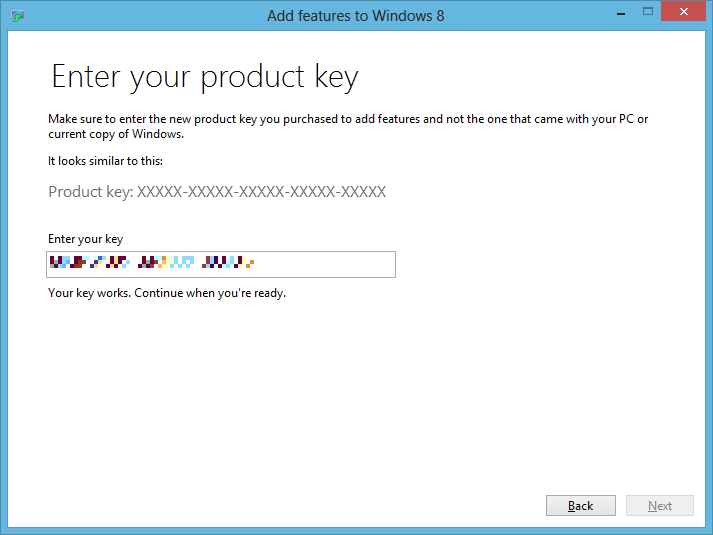

What is a Windows 8 product key?Īny Windows 8 product key is usually a 25-character serial code that the company uses to validate its product and the user’s purchase. All such keys are secure to use and are 100% working.
#WINDOWS 8 ENTERPRISE 9200 KEY UPDATE#
Windows 8.1 Update also enables semantic zoom upon clicking or tapping the title of an app category.Now, even the user looking for a free upgrade to Windows 8 OS can activate the program using the free Windows 8 key mentioned in this post. In contrast, the Start menu interface included in previous versions of Windows only highlighted apps.


In a multi-monitor configuration, Windows 8.1 can optionally display the Start screen only on the primarily display monitor instead of the currently active monitor when the ⊞ Win key is pressed.Enhanced synchronization settings, including those for app tile arrangement, tile sizes, and background.New background options for the Start screen, including animated backgrounds and the ability to use the desktop wallpaper.

Expanded color options on the Start screen, which now allows users to customize a color and a shade of one’s own choice instead of choosing from limited colors.The “small” size is one quarter of the default size in Windows 8. More size options for live tiles on Start screen: small, medium, wide, and large.The uninstall command allows Windows Store apps to be uninstalled from multiple computers.Start screen tiles can be locked in place to prevent accidental manipulation of tiles.On high-resolution display monitors with sufficiently large physical screen sizes, an option to display additional tiles on the Start screen is available.An option to display the “All Apps” section automatically instead of the Start screen is available. The section is dismissed by a similar button with an upward arrow. The “All Apps” section, now accessed with a hidden downward arrow or upward touch gesture, features a visible search bar which can display results for apps or other items.The Start screen can uninstall apps directly. A semantic zoom feature is available for both the Start screen and “All Apps” view which enables users to target a specific area or group on the screen. An additional section of the Start screen called “All Apps” can be accessed via a right click from the mouse or an upward swipe and will display all installed apps categorized by their names. Users can arrange individual app tiles or entire groups. App tiles can either be small (taking up 1 square) or large (taking up 2 squares) in size and can also display dynamic content provided by their corresponding apps, such as notifications and slide shows. The Start screen serves as the primary method of launching applications and consists of a grid of app tiles which can be arranged into columnar groups groups can be arranged with or without group names. Windows 8 introduces a new form of start menu called Start screen, which resembles the home screen of Windows Phone, and is shown in place of the desktop on startup.


 0 kommentar(er)
0 kommentar(er)
